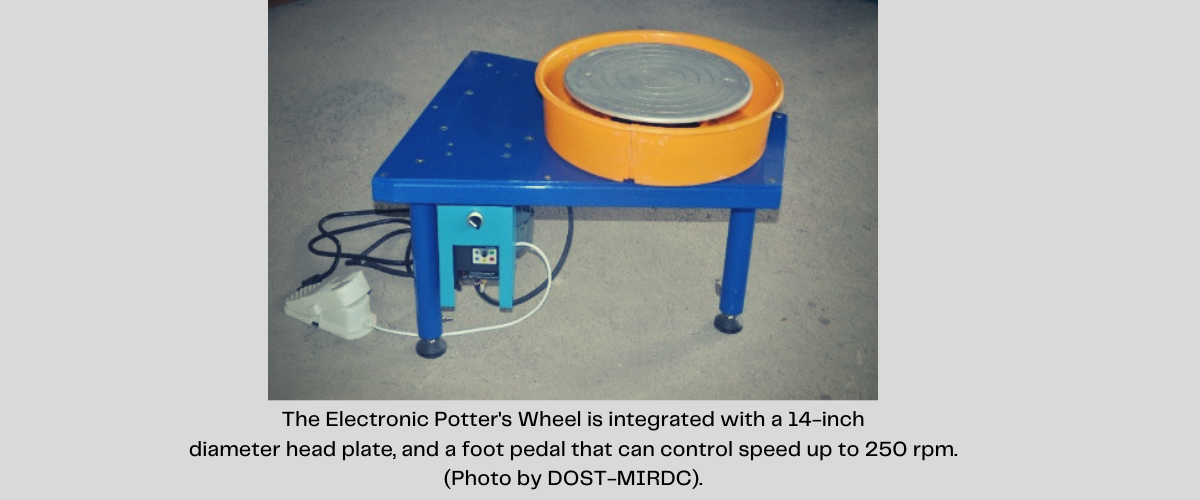With guidance from the mentorship process of the HIRANG Internship Program, the Metals Industry Research and Development Center under the Department of Science and Technology (DOST-MIRDC) conducted strategic market discovery activities for its “Electronic Potter’s Wheel” (EPW) technology.
DOST-MIRDC HIRANG program trainees Mr. Mervin Gorospe and Ms. Zalda Gayahan received hands-on coaching from their mentor Atty. Celeste Jumadla on activities such as gathering market information for EPW. From March to June this year, they researched and interviewed possible customers and users not just of EPW, but also of their other HIRANG technology - the Integrated Wrought Iron Forming Equipment (I-WIFE). This was despite the limitations brought by the imposed Enhanced Community Quarantine (ECQ) in some areas in the country due to the COVID-19 pandemic.
EPW was designed by DOST-MIRDC with the objective to create a pottery wheel that was simple to fabricate and easy to maintain for the owner. The EPW research and development team recognized that generally, a manual pottery wheel (non-motorized) has a heavy fly wheel. It requires the potter to exert maximum effort during operation. With this in mind, the team delivered a pottery wheel equipped with “corrosion-free head plate and body parts” which is powered by an electric motor.
To collect market information for EPW, Mr. Gorospe and Ms. Gayahan utilized search engines and the social media platform Facebook. In order to ensure in-depth quality of data, they also used approaches including online and phone interviews with the customer contacts.
Mr. Gorospe and Ms. Gayahan employed the competitive advantage tool using the information they gathered from the potential users identified. The interns concluded that EPW is best suited for “professional artist-hobbyist with established studios.” Comparing EPW with other pottery wheels available in the country, they explained that budding hobbyists would prefer smaller, lower-powered pottery wheel since they are also cheaper in price and readily available in online-selling platforms. Commercial pottery makers, on the other hand, would opt for the traditional pottery wheel despite its heavier flywheel, since they can counter the additional effort it requires with their years of skills and experience.
Originally, the EPW was designed with the Ceramic Studio of the University of the Philippines – College of Fine Arts as the intended user. DOST-MIRDC successfully met the specifications of the beneficiary. During their market study, the HIRANG interns initially identified other user segments for EPW including commercial shop pottery makers, hobbyists or entrepreneur pottery markers, and the government.
DOST-TAPI
MIKAELA KATE MAMAUAG
